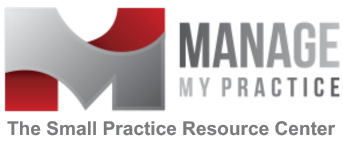I am often asked how much Nurse Practitioners in private medical practice should be paid. This answer depends on a number of factors, not the least of which is the scope of practice for NPs in your state. Here are two handy links to laws for NPs in each state and what...
Blog
EMV: How Your Practice Will Be Affected By Credit Card Changes in October 2015
At Manage My Practice, we are big proponents of using a Credit Card on File (CCOF) system in medical practices to reduce expenses and improve cash flow. Knowing how your processing vendor's pricing plan and security features work are critical to implementing this...
Chronic Care Management Q&A: Will Your Patients Agree to Pay?
Can Physicians Get Paid for Chronic Care Management? Everyone was very excited when Medicare announced its policy to start paying in 2015 for Chronic Care Management (CCM) services - non face-to-face services that physicians have been providing to their patients for...
Authorized Official vs. Delegated Official: What’s the Difference?
Medicare distinguishes between authorized officials and delegated officials on their enrollment forms and many people wonder what the difference is. Authorized Official Definition An authorized official means an appointed official (i.e. chief executive officer, chief...
ICD-10: Practices Should Focus on Just 3 Things
There is a lot of advice out there on making the transition to ICD-10. Your medical practice may already have taken some of this advice and you are well on the way to readiness for I-10. But if you've not done anything yet for the transition, this article is for you....
MMP Classic: How to Apologize to a Patient
I like to get complaints from patients. No, I’m not a glutton for punishment. What I like about complaints is that I hear directly from the patient what is bothering them, and I have an opportunity to connect with them personally. The ideal situation is having the...
CMS Hospital Compare: Patient Experience Translated Into Stars
Hospital Compare is a consumer-oriented website that provides information on how well hospitals provide care to their patients. It allows consumers to select multiple hospitals and directly compare performance measure information related to heart attack, heart...
MMP Classic: How Many Staff Do You Need?
Staffing your medical practice can be a daily balancing act. There's no simple formula for staffing that one can apply to every practice because each specialty and each situation requires something different. It is very important to right-size your staffing....
New “One Patient” MU Rule Brings Relief
Last week, CMS published a new proposed rule for Meaningful (MU). This rule strives to "...align Meaningful Use (MU) Stage 1 and Stage 2 objectives and measures with the long-term proposals for Stage 3...". In...
We Got Hacked! Or Something.
You may or may not have noticed that the Manage My Practice website has been, well, gone during the month of January. We are still not sure what exactly happened - it could have been hacked, but we're not sure who might have done such a dastardly deed. The bottom line...
Bringing you the latest healthcare news!
The Manage My Practice Blog keeps our readers up to date with the latest healthcare news, trends and analysis.
Quick Links
Get in touch
Phone: (919) 370 0504
